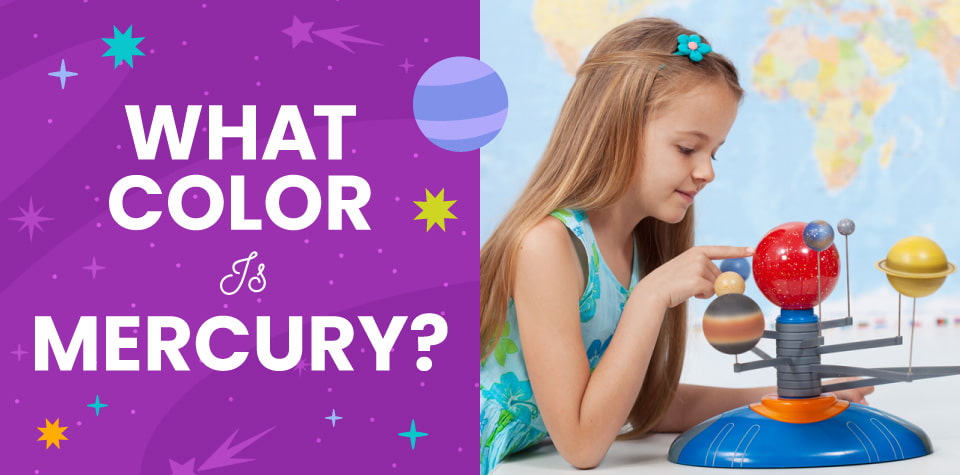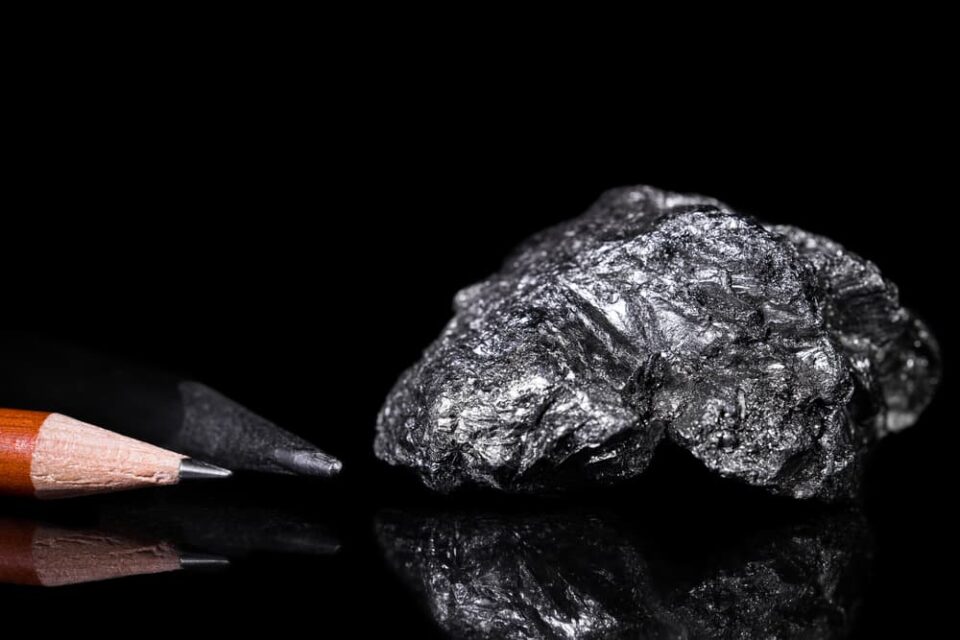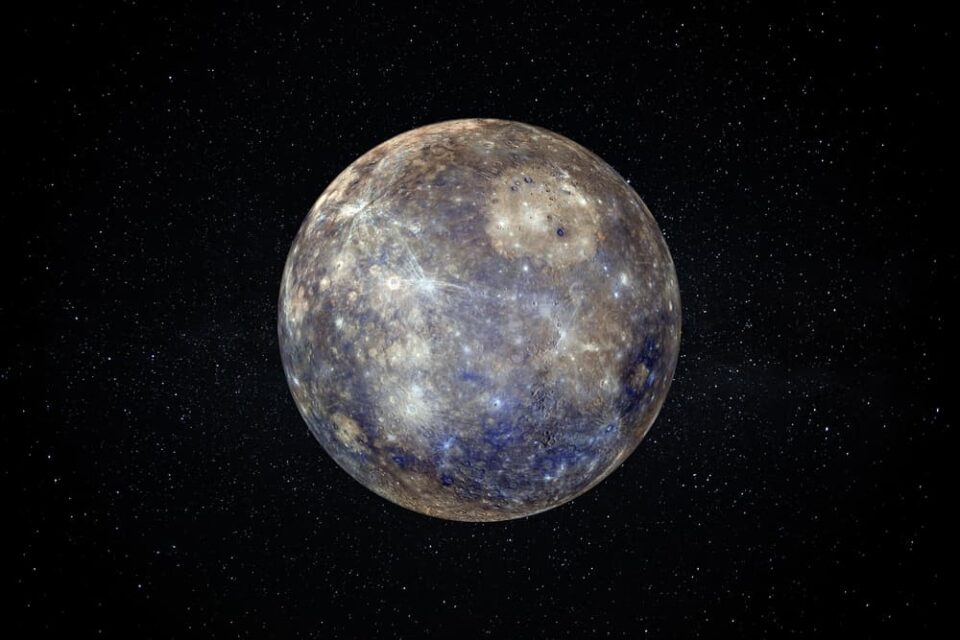
What Color Is Mercury? Fun Facts about Our Solar System’s Smallest Planet
Your child’s world is expanding by leaps and bounds—kind of like the universe. They’ve probably already peppered you with questions about the stars and the Moon. Maybe now it’s time to go one step beyond and begin to explore our little corner of the cosmos. Sometimes it’s best to start close to home, so why not introduce your curious stargazer to our solar system, starting with the planet closest to the Sun, Mercury?
Sound good? Keep reading to discover more fun facts about planet Mercury.
Mercury is one of only five planets visible to the naked eye from Earth and was one of the first to be discovered. The earliest historical reference to it dates back three thousand years to the ancient Sumerians. The Romans eventually took notice and named it after the swift-footed messenger of their gods. That’s rather fitting, considering Mercury completes its orbit around the Sun faster than any other planet in the solar system. Mercury is so speedy because it’s the planet closest to the Sun, circling the star at a distance of only thirty-six million miles away on a trip that lasts 88 days. (To compare, it takes Earth about four times as long to complete its journey around the Sun.)
Is It Hot in Here?
Because Mercury is the closest planet to the Sun, you might think that it would be the hottest in the solar system. While it does experience extremes of heat and cold, getting as hot as 806°F (430°C) during the day and reaching -292°F (-180°C) at night, the planet Mercury’s temperature isn’t the most scorching. That honor goes to Venus, where temperatures reach upward of 847°F (453°C), thanks to its heat-trapping atmosphere rich in carbon dioxide.
Even NASA’s latest spacesuits can’t handle temperatures as extreme as Mercury’s. You may think having to stay inside only during the hottest and coldest parts of the day wouldn’t be so bad, but considering that it takes a full 59 Earth days for Mercury to complete a single turn of its axis, you might want to reconsider. On Mercury, the days are pretty long!
Small but Mighty
While Mercury isn’t the hottest planet in the solar system, it does have its fair share of distinctions. Mercury is the smallest planet orbiting the Sun, with a diameter of 9,525 miles (15,329 kilometers). That’s only slightly larger than the circumference of Earth’s Moon. And speaking of moons, Mercury and Venus are the only two planets in the solar system that don’t have orbiting satellites.
What Color Is Mercury?
Mercury is at its brightest during April nights, showing up in the sky as a bright yellow dot hanging low over the horizon. But don’t be deceived by this twinkling color. The planet isn’t yellow or red as it’s often depicted in books. Mercury’s color is actually light gray!
NASA discovered this thanks to the MESSENGER spacecraft, launched in 2004. Its mission was to study Mercury’s chemical composition, geology, and magnetic fields. The spacecraft entered the planet’s orbit in March 2011 and beamed back amazing photos of Mercury’s surface in shades of gray. Scientists initially believed massive amounts of iron composed much of the planet. But as the probe got closer to the surface, they determined that graphite, not iron, was Mercury’s primary element. This is what gives the planet its light gray color.
And yes, the graphite found on the surface of Mercury is essentially the same compound we use to make pencils on Earth.
Other planets’ colors may be more vibrant, like Neptune and Uranus’s bright blue or Jupiter’s shades of yellow, but Mercury’s true color has an advantage. It shows off its geography very well.

Things Are Pretty Rocky
Mercury is a terrestrial planet like Earth, composed mainly of igneous silicate rocks exposed to the atmosphere. Unlike our world, Mercury doesn’t experience tectonic shifts or erosion. It’s remained essentially the same since its molten surface solidified about four billion years ago. The only changes in its rocky surface occur when a meteor strikes the planet. These meteor strikes create large impact craters, which are easier to see thanks to Mercury’s color. The dark gray craters are deeper than those showing light gray, allowing scientists to estimate the speed and strength of each impact.
There’s More To Discover
Mercury has many secrets to unlock. Keep the discoveries coming with these fun facts:
MERCURY IS SHRINKING: But don’t worry! It won’t disappear. Scientists believe the planet’s iron core is solidifying, reducing its volume. They estimate Mercury’s diameter has shrunk by nine miles since its formation four billion years ago.
A LOT OF IMPACT: Mercury has more craters on its surface than any other planet in the solar system. It has so many that it looks very similar to our Moon.
ALL WET: As part of the MESSENGER (which stands for “Mercury Surface, Space Environment, Geochemistry and Ranging”) mission, NASA and the Johns Hopkins University Applied Physics Laboratory took pictures of Mercury’s surface using different wavelengths of light. The color image sent back showed ice deposited deep in its craters, where the shade protects it from being evaporated by the Sun. But there isn’t enough to support life.
COLOSSALLY CONTINENTAL: One of Mercury’s craters, the Caloris Basin, is so large it could encompass all the countries from Portugal to Germany. Scientists have calculated that the object that created the crater must have been at least 62 miles long.
MERCURY HERE ON EARTH? In 2012, a street vendor in Morocco sold a green meteorite to a dealer who sent a sample to be studied. Experts excitedly compared the meteorite’s composition to the results of the surface scans performed by the MESSENGER probe on Mercury. The results were remarkably similar, leading scientists to believe that the meteorite came from Mercury.
MAY WE HAVE SOME MORE? Only two spacecraft have studied Mercury: Mariner 10 in 1973 and MESSENGER in 2004. Mariner performed three flybys of the planet before being catapulted toward the Sun. MESSENGER studied Mercury for four years before being deliberately sent on a collision course with the planet’s surface in 2015. Another mission, a joint project between the European Space Agency (ESA) and the Japan Aerospace Exploration Agency (JAXA), will send two spacecraft to orbit Mercury, arriving in 2025.

Shoot for the Stars and More
There are many opportunities for exploring the solar system (and beyond!) with your child. Together, you can launch into the wonders of space flight, investigate asteroids and other celestial bodies moving through the galaxy, or discover the coldest spot in the universe.
Keep the adventure going with toys and crafts that introduce your young one to different aspects of science and technology with our Science Junior subscription box.
